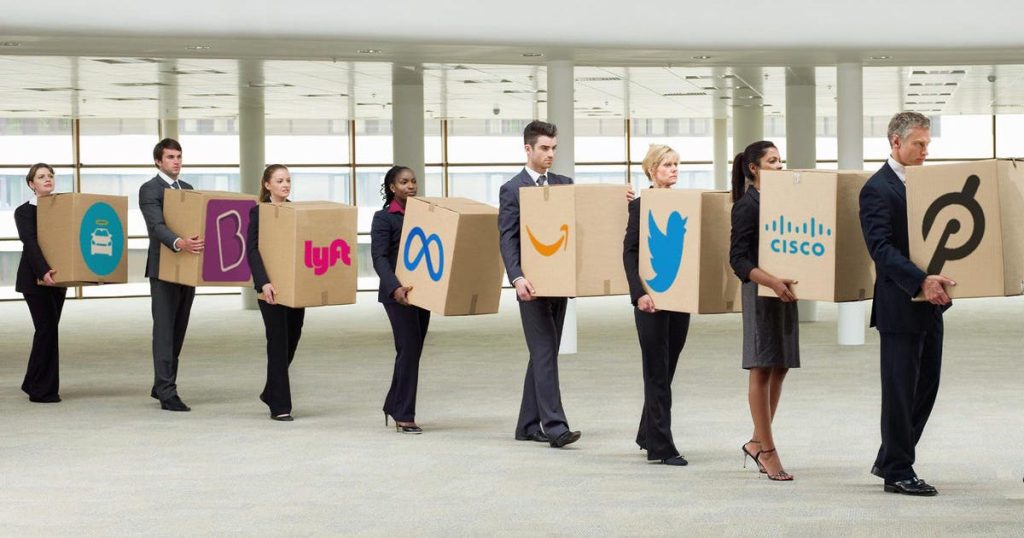The doom and gloom from last year has followed us into the new year with the worldwide tech layoffs still in full swing in the first few weeks of 2023.
According to data compiled by layoffs.fyi, about 26,061 employees have been laid off by 104 tech companies. This suggests that 2023 is on pace to surpass 2022 for global tech redundancies, close to the early days of the COVID-19 pandemic.
Among this year’s high-profile layoffs include SalesForce, which plans to cut off 10 per cent of its workforce by 2024, and Microsoft, which plans to retrench a number of employees in its engineering divisions.
These layoffs could have all been prevented — if only these tech companies realised that the rapid upsizing of their companies during COVID-19 was unsustainable.
As more people turned to technology due to the lockdown and work and play were digitalised, most tech giants believed that this would be the “new normal”. Hence, these companies went on a hiring rampage to up their game in this field.
But nothing good ever lasts. In fact, these trends took a sharp turn last year.
Facing economic headwinds such as war and inflation, these tech giants have seen a significant slowdown in growth, causing them to scramble for an effective way to cut costs.
Short-run gains, long-run losses

“Labour costs are usually the first thing that goes when companies cut costs, aside from advertising and marketing,” Dan Wang, an associate professor at the Columbia Business School, told Business Insider.
While there are other ways to cut costs, such as putting promotions on hold, most of these companies have resorted to layoffs as a quick and convenient way to cut costs.
But can laying off employees be the solution for companies to increase their revenues?
Contrary to the popular belief that layoffs can help reduce the financial burden of businesses, layoffs don’t usually reposition a firm towards growth.
In fact, when Nokia resorted to the same strategy to retrench thousands of its employees worldwide as its mobile phone business was declining in 2008, the company ended up spiralling into a deeper financial crisis.
This is because all companies gain from retrenching their employees is a short-term accounting bump which looks good on paper, appeasing the shareholders of these companies. In the long run, these companies would often need to deal with more negative consequences as compared to positive ones.
According to Josh Bersin, it would take a company a year or two to “recover” from the negative effects of a layoff, and some of these companies never return to pristine growth.
A string of resignations

With the current volatility of the tech industry, employees in almost every other tech firm are feeling the heat.
As more of their colleagues are laid off, the remaining employees of these tech firms may start questioning their own career trajectories and hunt for other job opportunities, causing a ripple effect.
Coined the “turnover contagion”, a report done by Visier found that employees are 7.7 per cent more likely to leave a company after a termination or an “involuntary resignation” occurs within their team. This percentage is exacerbated to 9.1 per cent if the resignation was voluntary.
Furthermore, this phenomenon is more likely to occur within smaller team sizes in an organisation — employees who work on teams of two are 25.1 per cent more likely to quit once their team member resigns, compared to 14.5 percent for teams of six to 10, and 7.9 per cent for teams of 11 to 20.
This is due to “strong interdependencies and personal relationships between co-workers in smaller teams”, Visier’s principal of research and value Andrea Derler told CNBC Make It.
Hence, with the lack of manpower, companies would have to scramble to rehire their former or new employees — similar to how Twitter asked its former employees to return after laying off about half of its workforce after Elon Musk’s takeover.
Multitasking may be a desirable trait, but it reduces prodcutivity

As a company lays off more of its staff (and triggers a ripple effect), the remaining employees would have to wear many hats to fill the roles of former employees.
These employees would unfortunately struggle to fulfil these roles due to the knowledge loss from retrenched employees.
Although in recent years, multitasking may seem like something that is expected of you at a workplace and is often listed as a desirable trait on job descriptions, multitasking is, in fact, counterproductive when it comes to workplace performance.
According to several studies and researches, employees that multitask would have their productivity reduced by up to 40 per cent, which, in turn, often leads up to a drain on workplace morale.
This comes with a high price tag — a disintegrating workplace morale is the fuel that feeds the fires of employee discontentment, workplace conflict, and absenteeism within an organisation, leading to an overall plunge in profits of a company.
In contrast, organisations with higher workplace morale show 17 per cent greater productivity, and report up to 41 per cent lower absenteeism rates and 21 per cent higher profitability than other companies.
The costs of hiring and training new employees

Companies often underestimate the skills and knowledge they send out the door as they retrench employees.
When business conditions rebound, these firms would have to ramp up their employment for the business to grow, leading to snowballing costs of rehiring, training and orientating new hires.
Productivity would be lost to the adjustment period (or training period) of new employees, the time spent by the rest of the company’s employees to assist newcomers, as well as the time lost by managers to recruit these new hires.
From background checks, to interviews, and integrating the employee into the company, the dollars start adding up quickly as a company hires new employees.
As a matter of fact, between 2020 and 2021, companies have spent over US$92 billion on training alone, and it can take up to six months (or more) for a company to break even on its investment on a new hire.
The power of social media

The reputation of a company is the result of the perceptions of consumers from an external view. With the global reach of social media, news of layoffs — and how it is executed by a company — would spread rather easily.
From unexpectedly receiving an email about their retrenchment, to being informed via Zoom and text messages, employees are sharing their experiences on being laid off by these tech giants, with some likening them to a “slap in the face”.
As news of these retrenchments spread across social media sites such as LinkedIn, more consumers are wary of these tech giants, which directly affects these companies’ bottomline.
When potential customers find one negative article on the first page of their search results, business are at risk of losing 22 per cent of business.
In addition to this, consumers tend to trust consumer-written reviews of a company over posts by brands or companies — meaning that the experience shared by these retrenched employees hold a lot more weight, directly affecting a company’s reputation.
In the long run, the tarnished reputation of these businesses would also hinder them when it comes to hiring. With sites such as Glassdoor displaying reviews from former and current employees, up to 69 per cent of job seekers would reject a job offer from a company with bad reviews even when they are unemployed.
Even if the company offered an increase in compensation by as much as 100 per cent, 30 per cent of job seekers would still reject the job offer.
Looking past short-term benefits
Given the current economic situation, it is no surprise that companies are struggling to adapt to changing workforce needs.
However, given the negative effects of laying off employees, companies should only resort to retrenchment should the situation be inevitable.
Aside from layoffs, there are many other alternatives these companies can take — and one of these could be retraining current employees to take on different roles.
For example, in 2013, American telecommunications holding company AT&T realised that half of its workforce were carrying out roles that would be redundant in a decade so it decided to retrain all of its 100,000 workers by 2020 instead of carrying out mass layoffs.
Besides retraining employees, cost cuts in other areas, such as cuts in benefits and perks, as well as furloughs, could be undertaken by companies to stay afloat.
Featured Image Credit: Compassionate Eye Foundation Martin Barraud via Ojo Images Ltd via Getty Images










